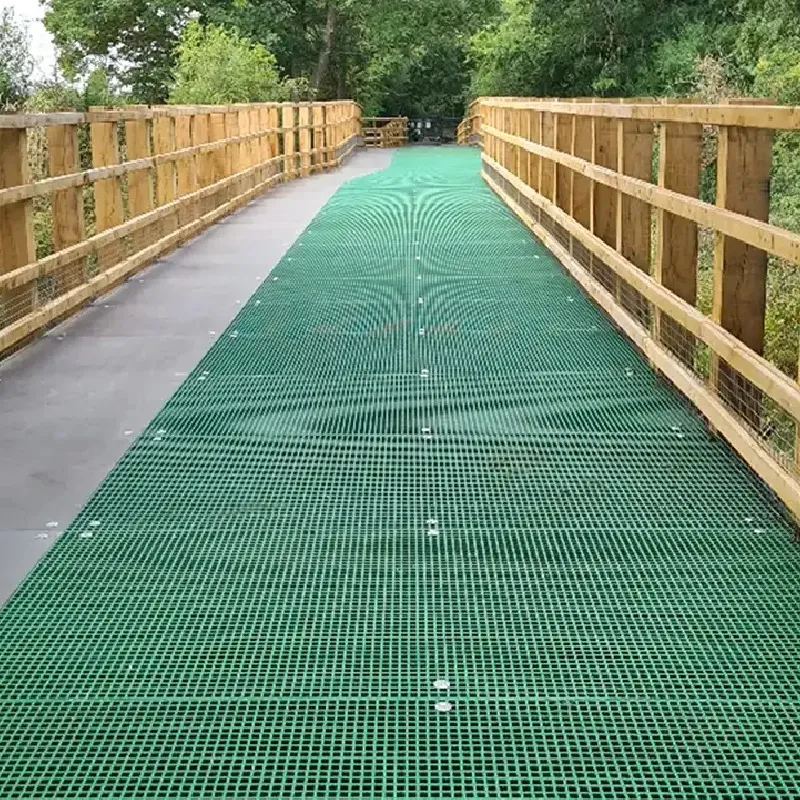loading...
- No. 9, Xingyuan South Street, Dongwaihuan Road, Zaoqiang County, Hengshui, Hebei, China
- admin@zjcomposites.com
- +86 15097380338
- Welcome to visit our website!
fibreglass reinforced plastic grating
Understanding Fiberglass Reinforced Plastic Grating
Fiberglass Reinforced Plastic (FRP) grating has emerged as a pivotal material in various industries, thanks to its superior qualities and versatile applications. Combining the lightweight properties of fiberglass with the strength of plastic, FRP grating provides an innovative solution for a myriad of challenges faced by engineers, architects, and contractors.
Composition and Manufacturing
At the core of its functionality, FRP grating is a composite material that integrates fiberglass strands within a plastic matrix, typically polyester or vinyl ester resin. This composition results in a product that is not only lightweight but also incredibly strong and resistant to corrosion. The manufacturing process generally involves a combination of pultrusion and molding techniques, ensuring uniform thickness and strength across the grating panels.
The production process begins by pulling continuous fiberglass strands through a resin bath, where they are saturated with resin. These strands are then shaped into a specific mold that forms the grating. Once the material has cured, the result is a robust and durable product ready for various applications.
Properties and Advantages
FRP grating boasts a multitude of advantages that make it an attractive option for construction and industrial applications. First and foremost is its exceptional resistance to corrosion. Unlike traditional metal grating, which can rust and degrade over time, FRP grating withstands exposure to harsh chemicals, water, and UV light without compromising its structural integrity. This characteristic makes it ideal for environments such as wastewater treatment plants, chemical processing facilities, and marine applications.
Moreover, the lightweight nature of FRP grating simplifies handling and installation. It is easy to cut and manipulate, allowing for quick and efficient setup in various locations. Lower transportation costs and reduced labor requirements lead to significant savings on project budgets without sacrificing quality or safety.
fibreglass reinforced plastic grating

FRP grating also provides a slip-resistant surface, which is crucial in settings where oils and liquids may accumulate. This enhances workplace safety, reducing the likelihood of accidents due to slips and falls. Additionally, its non-conductive properties mean that it can be safely used in electrical environments, further broadening its usability.
Applications
The versatility of FRP grating makes it suitable for a wide range of applications across different sectors. In the industrial realm, it is commonly used for walkways, platforms, and stair treads where high strength and durability are required. The food processing industry benefits from its hygienic properties, as FRP grating can be easily cleaned and does not harbor bacteria.
In marine and offshore applications, FRP grating is preferred due to its ability to withstand saltwater exposure, making it an ideal choice for docks, piers, and shipyards. Furthermore, in construction, FRP grating is utilized for architectural elements, allowing designers to create aesthetically pleasing structures that are also functional.
Environmental Considerations
An increasingly important consideration in today's construction materials is the environmental impact. FRP grating fits well into sustainable practices as it can be made from recycled materials and is often recyclable itself. Additionally, its longevity means less frequent replacements and lower lifecycle costs compared to traditional materials, contributing to a reduced environmental footprint.
Conclusion
In summary, Fiberglass Reinforced Plastic grating is a remarkable material that has revolutionized various sectors with its unique properties. Its resistance to corrosion, lightweight nature, and safety features, coupled with its versatile applications and environmental advantages, make it a frontrunner in modern construction and industrial practices. As industries continue to evolve, the demand for innovative materials like FRP grating will undoubtedly grow, paving the way for safer, more efficient, and sustainable practices across the board. Whether you are involved in construction, manufacturing, or any industry requiring reliable infrastructure, considering FRP grating could lead to significant benefits, enhancing both functionality and safety.
-
The Rise of FRP Profiles: Strong, Lightweight, and Built to LastNewsJul.14,2025
-
SMC Panel Tanks: A Modern Water Storage Solution for All EnvironmentsNewsJul.14,2025
-
GRP Grating: A Modern Solution for Safe and Durable Access SystemsNewsJul.14,2025
-
Galvanized Steel Water Tanks: Durable, Reliable, and Ready for UseNewsJul.14,2025
-
FRP Mini Mesh Grating: The Safer, Smarter Flooring SolutionNewsJul.14,2025
-
Exploring FRP Vessels: Durable Solutions for Modern Fluid HandlingNewsJul.14,2025
-
GRP Structures: The Future of Lightweight, High-Performance EngineeringNewsJun.20,2025
